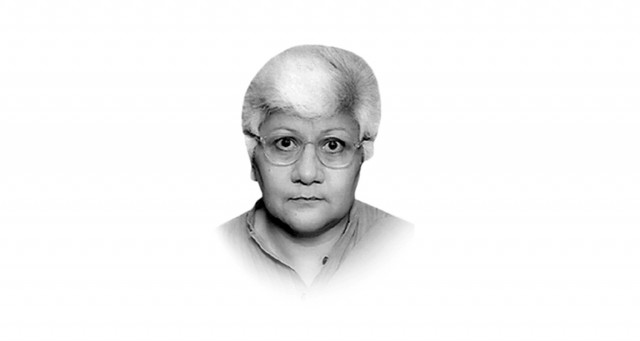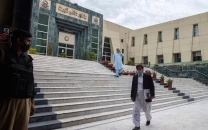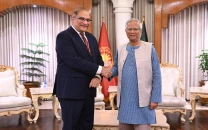We have failed the Lahore Resolution
It may be instructive to reflect upon our actions in East Bengal, apply the lessons learned to the Balochis.

We have failed the Lahore Resolution
“It is the considered view of this session of the All India Muslim League that no Constitutional Plan would be workable in this country or acceptable to the Muslims, unless it is designed on the following basic principle, namely that geographically contiguous units are demarcated into regions which should be so constituted, with such territorial readjustments as may be necessary, that the areas in which the Muslims are numerically in majority as in the North Western and Eastern Zones of India would be grouped to constitute ‘Independent States’ in which the constituent units shall be autonomous and sovereign.”
The Resolution further stated “that adequate, effective and mandatory safeguards shall be specifically provided in the constitution for minorities in the units and in the regions for the protection of their religious, cultural, economic, political, administrative and other rights of the minorities, with their consultation. Arrangements thus should be made for the security of Muslims where they were in a minority”. The session further “authorises the Working Committee to frame a scheme of constitution in accordance with these basic principles, providing for the assumption finally by the respective regions of all powers such as defence, external affairs, communications, customs, and such other matters as may be necessary.”
The Lahore Resolution was passed the next day, on March 24, 1940, and is widely believed to be the basis of the subsequent struggle for the establishment of Pakistan. However, a close reading of the text suggests that what was envisioned in 1940 differed in significant ways from the kind of state that emerged seven years later.
Firstly, while there is reference to “areas in which Muslims are numerically in majority”, there is no reference to a state based on religion. Subsequently, effective and adequate safeguards are sought not only for Muslims, where they constitute a minority, but also for minorities in Muslim majority areas. It is promised that the religious, cultural, economic, political, administrative and other rights of non-Muslims citizens would be protected with their consultation. In a sense, it can be argued that a theoretical equality was envisaged between Muslims and non-Muslims depending on which group constituted a minority.
The most telling lines of the Resolution are contained in the third paragraph which reads: “North Western and Eastern Zones of India would be grouped to constitute ‘Independent States’ in which the constituent units shall be autonomous and sovereign”. It seems that instead of one state, a group of states were envisaged, with each one being autonomous and sovereign. Instead of a monolithic state, a confederation appears to be imagined, since the idea of sovereignty is tied strongly to national states and not provinces.
The fifth paragraph, in fact, elaborates a little on the meaning of ‘sovereignty’ as the session tasks the Working Committee to frame a scheme of constitution that provides for the assumption by “respective regions of all powers such as defence, external affairs, communications, customs, and such other matters as may be necessary”. Here, there is reference to ‘respective regions’ and earlier to ‘independent states’ that would be sovereign and autonomous. Significantly, the resolution bestows the powers of defence, foreign affairs, communications and administrative matters, such as collection of customs duties, to the regions or states, rather than to a centralised entity.
The Resolution of 1940 thus does not merely envision maximum provincial autonomy; rather it goes much further and suggests a confederation of states or a loose federation with most of the powers vested in the states. The state that eventually emerged in 1947 acquired two characteristics that in fact nullified the principles contained within the Lahore Resolution. One, religious minorities were not given the appropriate safeguards with their consultation and the state moved steadily toward the imposition of one version of one religion on the country, with laws relegating the minorities to a secondary position. Secondly, Pakistan moved progressively toward centralised and authoritarian rule, thus negating the sovereign status of the regions which became merely constituent units of the state. With the passage of the 18th constitutional amendment, some powers have, at least theoretically, been devolved to the provinces, but we are still light years away from the promise of the Lahore Resolution.
Ironically and tragically, March 25 comes just one day after March 24, the day the resolution was passed. On the night of March 25, 1971, the army action began in former East Pakistan and soon turned into genocide, with millions of Bengalis mercilessly butchered and thousands raped by the defenders of the country. ‘Operation Searchlight’ was a complete negation of the independence and sovereignty embedded in the Lahore Resolution. The West Pakistani rulers, both military and civilian, refused to hand over power to the duly elected Awami League, which resulted in a resistance movement that culminated with the liberation of Bangladesh in December 1971. The unit of the federation in which the Muslim League was established in 1906 seceded from the federation!
Ironically, Mujibur Rehman’s ‘six points’ were in accordance with the levels of autonomy and sovereignty implicit and explicit in the Lahore Resolution. In fact the six points represented a federal, parliamentary form of government, and were in agreement that defence and foreign affairs should remain with the federal government. However, fiscal policies and the right to maintain a separate militia were to remain with the federating units. The West Pakistani rulers, who had used the resources generated by East Pakistani exports to invest in West Pakistan’s development, termed Mujibur Rehman a traitor for demanding the just rights of his people.
Today, as we once again remember the Lahore Resolution of March 1940, it may be instructive to reflect upon our actions in East Bengal and apply the lessons learned to another alienated people — that of Balochistan.
Published in The Express Tribune, March 23rd, 2011.



















COMMENTS
Comments are moderated and generally will be posted if they are on-topic and not abusive.
For more information, please see our Comments FAQ